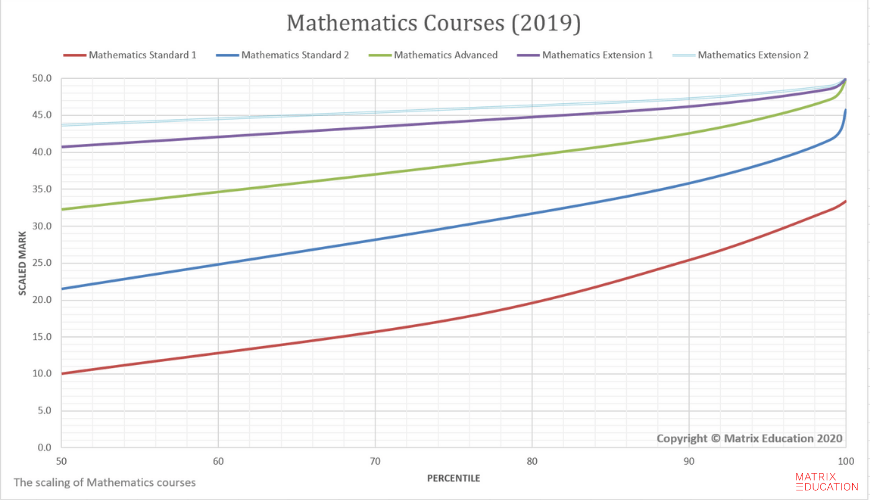Welcome to Matrix Education
To ensure we are showing you the most relevant content, please select your location below.
Select a year to see courses
Learn online or on-campus during the term or school holidays
Learn online or on-campus during the term or school holidays
Learn online or on-campus during the term or school holidays
Learn online or on-campus during the term or school holidays
Learn online or on-campus during the term or school holidays
Learn online or on-campus during the term or school holidays
Learn online or on-campus during the term or school holidays
Get HSC Trial exam ready in just a week
Get HSC exam ready in just a week
Select a year to see available courses
Science guides to help you get ahead
Science guides to help you get ahead
In this post, we'll hope you figure out which is the right Mathematics course for you.

Join 75,893 students who already have a head start.
"*" indicates required fields
You might also like
Related courses

Join 8000+ students each term who already have a head start on their school academic journey.
In this post, we answer some frequently asked questions from Year 10 students about choosing the right Mathematics course for Year 11:
Year 11 Mathematics is the first year of Stage 6 Mathematics.
For Year 11 students, there are three different courses of study. Below are the NESA links to the course outlines:
For Year 12 students, there are four different courses of study:
The different levels of Mathematics have different requirements for student competency and ability. To help students determine which Mathematics course is appropriate for them, we have created a flowchart that illustrates the level of achievement students need to attain for the different levels of Mathematics courses.
The Year 11 and 12 Maths Standard 1 and 2 courses are aimed at giving students proficiency in practical aspects of Maths for entry into the workforce. Students’ performance in Year 10 Mathematics should determine the level of Year 11 Mathematics they choose to study.
Various university courses now require Mathematics Advanced or higher as prerequisites
Universities are starting to introduce Mathematics prerequisites or/and recommended subjects with minimum HSC result for various courses.
Click here for a table of the University of Sydney degrees that will require a Maths prerequisite.
NESA recommends:
The content of the Mathematics Extension 1 course includes the whole of the Mathematics Advanced (2 unit) course. Therefore, students sit HSC exams for:
For this reason, the Year 12 Mathematics Advanced course is assigned 2 units of HSC marks and the Year 12 Mathematics Extension 1 course is assigned 1 unit of HSC marks. Hence the total number of units for this course is 3 units.
The Matrix+ Maths Std 2 Y12 course will help you get HSC ready at home! Learn more.
Learn to solve any Maths question!
Expert teachers, weekly quizzes, one-to-one help! Ace your next Maths Std 2 assessment with Matrix+ Online.
The Year 11 Mathematics Advanced and Extension 1 topics are listed below. Please note that in Year 11 Maths Extension 1, students will learn both Year 11 Maths Advanced and Extension 1 topics.
| Table: Year 11 Mathematics Advanced and Extension 1 Syllabus | ||
| Year 11 Maths Standard | Year 11 Maths Advanced | Year 11 Maths Extension 1 |
| MS-A1: Formulae and Equations | Basic arithmetic and algebra (1.1 – 1.4) | Other inequalities (1.4E) |
| MS-A2: Linear Relationships | Real functions (4.1 – 4.4) | Circle geometry (2.6 – 2.10) |
| MS-F1 (F1.1): Interest and depreciation | Trigonometric ratios (5.1 – 5.5) | Further trigonometry (5.6 – 5.9) |
| MS-M1 Applications of Measurement (M1.1) | Linear functions (6.1-6.5, 6.7) | Angles between two lines (6.6) |
| MS-F1 Money Matters | The quadratic polynomial and the parabola (9.1 – 9.5) | Internal and external division of lines into given ratios (6.7E) |
| MS-M2 Working with Time | Plane geometry (2.1 – 2.4) | Parametric representation (9.6) |
| MS-S1 Data Analysis | Tangent to a curve and derivative of a function (8.1 – 8.9) | Permutations and combinations (18.1) |
| MS-S2 Relative Frequency and Probability | Polynomials (16.1 – 16.3) | |
| Harder applications of the Preliminary 2 Unit course | ||
Depending on schools, the Year 11 Mathematics Extension 1 program will vary.
At Matrix, we teach Year 11 Mathematics and Extension 1 topics one after the other. The Matrix Year 11 Mathematics Standard 2, Advanced, and Extension 1 course programs are shown below:
| Table: Matrix Year 11 Mathematics Program | |||
| Period | Year 11 Maths Standard | Year 11 Maths Advanced | Year 11 Maths Extension 1 |
Sep- Dec | Launching September 2021 | Basic Arithmetic and Algebra Absolute Values Linear Functions | Linear Functions Non-Linear Curves Absolute Values and Inequalities Quadratic Polynomial |
Jan – Apr | Launching September 2021 | Functions and Relations Trigonometric Ratios | Trigonometric ratios Locus Limits of the Derivative |
Apr – Jun | Launching September 2021 | Plane geometry The Quadratic Polynomial Locus and Parabola | Polynomials Geometrical Applications of Differentiation Parametric Representation |
Jul – Sep | Launching September 2021 | Introductory Calculus Probability Revision of Preliminary Topics | Sequences and Series Circle Geometry Integration Volumes |
The Year 12 Mathematics Advanced, Standard 2, and Extension 1 topics are listed below. Please note that Year 12 Maths Extension 1 students will learn both Year 12 Maths Advanced and Extension 1 topics.
| Table: Year 12 Mathematics Standard 2, Advanced, and Extension 1 Syllabus | ||
| Year 12 Maths Standard 2 | Year 12 Maths Advanced | Year 12 Maths Extension 1 |
| MS-A4 Types of Relationships | Coordinate methods in geometry (6.8) | Method of integration (11.5) |
| MS-F4 Investments and Loans | Applications of geometrical properties (2.5) | Primitive of sin(2x) and cos(2x) (13.6E) |
| MS-N2 Network Concepts | Geometrical applications of differentiation (10.1-10.8) | Exponential growth and decay equation (14.2E) |
| MS-F5 Annuities | Integration (11.1 – 11.4) | Velocity and acceleration as a function of ‘x’ (14.3E) |
| MS-M6 Non-right-angled trigonometry | Trigonometric functions (including applications of trigonometric ratios) (13.1 – 13.6, 13.7) | Projectile motion (14.3E) |
| MS-M7 Rates and Ratios | Logarithmic and exponential functions (12.1 – 12.5) | Simple harmonic motion (14.4) |
| MS-N3 Critical Path Analysis | Applications of calculus to the physical world (14.1 – 14.3) | Inverse functions and inverse trigonometric functions (15.1 – 15.5) |
| MS-S4 Bivariate Data Analysis | Probability (3.1 – 3.3) | Induction (7.4) |
| MS-S5 The Normal Distribution | Series (7.1 – 7.3) and Series applications (7.5) | Binomial theorem (17.1 – 17.3) |
| Further probability (18.2) | ||
| Iterative methods for estimating roots (16.4) | ||
| Harder applications of HSC 2 Unit topics | ||
At Matrix, we teach Year 12 Mathematics and Extension 1 topics one after the other. The Matrix Year 11 Mathematics Standard 2, Advanced, and Extension 1 course programs are shown below:
| Table: Matrix Year 12 Mathematics Program | |||
| Period | Year 12 Maths Standard 2 | Year 12 Maths Advanced | Year 11 Maths Extension 1 |
Sep- Dec | Algebra Types of Relationships Trigonometric Functions Rates and Ratios | Basic Arithmetic and Algebra Absolute Values Linear Functions | Linear Functions Non-Linear Curves Absolute Values and Inequalities Quadratic Polynomial |
Jan – Apr | Investments and Loans Annuities Network Concepts The Normal Distribution Bivariate Data Analysis | Functions and Relations Trigonometric Ratios | Trigonometric ratios Locus Limits of the Derivative |
Apr – Jun | Working with Time Probability Critical Path Analysis Guided Practice Exams | Plane geometry The Quadratic Polynomial Locus and Parabola | Polynomials Geometrical Applications of Differentiation Parametric Representation |
Jul – Sep | HSC Exam Booster Revision of Algebra Revision of Trigonometric Functions Revision of Financial Mathematics Revision of Statistics Revision of Networks | Introductory Calculus Probability Revision of Preliminary Topics | Sequences and Series Circle Geometry Integration Volumes |
Students must remember that Year 11 is the first year of Stage 6 syllabus. This means that all the content from Year 11 Mathematics Advanced or/and Extension 1 are examinable in the HSC.
Below is an HSC exam question from the 2016 HSC Mathematics Advanced Exam Paper.
2016 HSC Mathematics Advanced Question 3
This HSC exam question is from the Year 11 Maths Advanced topic: ‘The quadratic polynomial and the parabola (9.1-9.5)’!
All topics from Year 11 Mathematics Advanced and/or Extension 1 are examinable in the HSC
Below is a HSC exam question from the 2016 HSC Mathematics Extension 1 Exam Paper.
2016 HSC Mathematics Extension 1 Question 10
This HSC exam question is from the Year 11 Maths Extension 1 topic: ‘Polynomials (16.1-16.3)’!
Scaling is the process of converting HSC marks into scaled marks for comparison across different subjects. This conversion, or ‘scaling,’ is required as students undertake different levels of Mathematics.
A different level of scaling is applied to Mathematics courses as shown in the graph below.

As a general rule, the “harder” the unit of study, the “better” the scaling it receives.
Mathematics Extension 1 scales better than Mathematics Advanced.
Please note that, students should not choose their subjects based on scaling. Instead, scaling graphs should be used as the tool for determining your required position/rank in the state for you to obtain your desired ATAR.
For example,
In summary,
Written by DJ Kim
DJ is the founder of Matrix Education and has over 20 years of HSC Physics teaching experience. He is the co-author of the Matrix Science program, course materials and assessments. He is also renowned for his ATAR & Scaling seminars and development of the first ATAR Calculator.© Matrix Education and www.matrix.edu.au, 2025. Unauthorised use and/or duplication of this material without express and written permission from this site’s author and/or owner is strictly prohibited. Excerpts and links may be used, provided that full and clear credit is given to Matrix Education and www.matrix.edu.au with appropriate and specific direction to the original content.